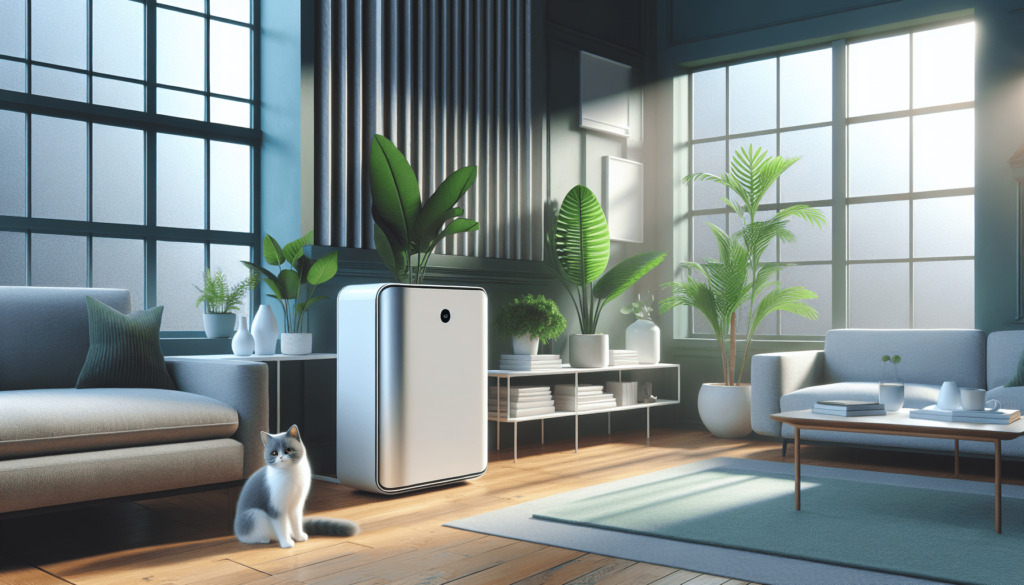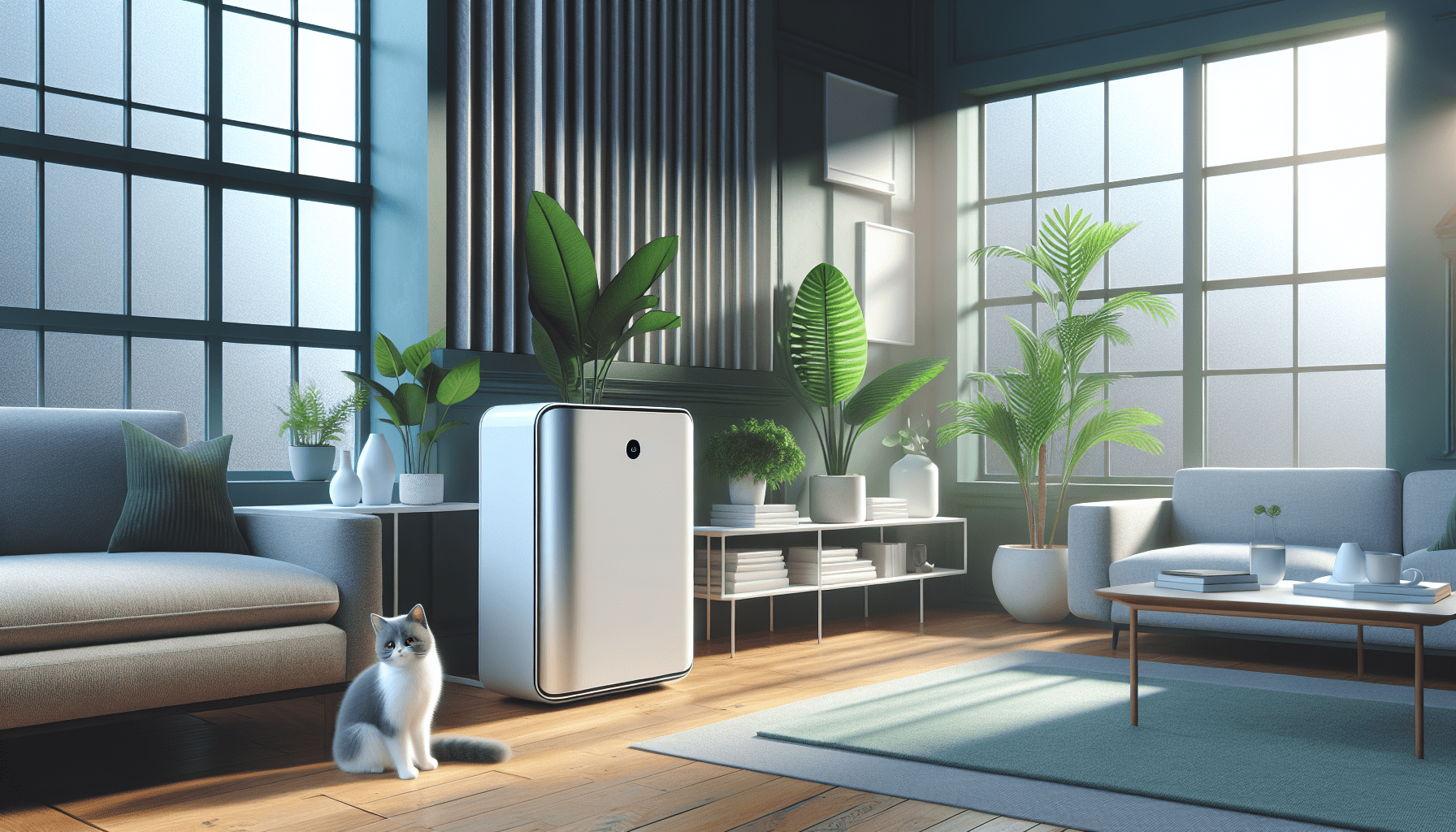Have you ever wondered why you often sneeze, cough, or have itchy eyes when you’re indoors? It might not just be coincidental or a one-time episode. It could be linked to something as invisible yet impactful as the air you breathe inside your home. Yes, we are talking about indoor air quality and its connection to allergens.
Understanding Allergens
What Are Allergens?
Allergens are substances that can cause an allergic reaction in sensitive individuals. These can be anything from pollen and pet dander to dust mites and mold spores. The common characteristic of allergens is that they are typically harmless to most people but can trigger immune system responses in sensitized individuals.
How Do Allergens Affect You?
When your body encounters an allergen, it goes into defense mode, thinking it’s under attack. This triggers symptoms like sneezing, coughing, a runny nose, itchy eyes, and sometimes even skin rashes. In more severe cases, exposure can lead to asthma attacks or other respiratory issues.
What Is Indoor Air Quality (IAQ)?
Definition of Indoor Air Quality
Indoor Air Quality (IAQ) refers to the condition of the air inside buildings and structures. It is a measure of how clean and breathable the indoor air is, based on pollutants, humidity levels, ventilation, and other factors. Good IAQ ensures a healthy living environment, while poor IAQ can lead to health issues.
Factors Influencing IAQ
Several factors can influence IAQ, including:
- Ventilation: Proper airflow helps reduce the concentration of indoor pollutants.
- Humidity: Helps control mold and dust mites.
- Pollutants: Like smoke, chemicals, and particulate matter.
| Factor | Impact on IAQ |
|---|---|
| Ventilation | Reduces pollutant concentration, improves freshness |
| Humidity | Controls mold and dust mites |
| Pollutants | Can cause health issues if levels are too high |

Common Indoor Allergens
Pet Dander
Pet dander consists of tiny, even microscopic, flecks of skin shed by cats, dogs, and other animals with fur or feathers. These bits of skin can cause allergic reactions in sensitive individuals. Unlike fur, dander is so light that it can remain airborne for a very long time, aggravating your symptoms.
Dust Mites
Dust mites are tiny creatures that thrive in your home environment. They feed on dead skin cells shed by people and pets, and are commonly found in bedding, upholstered furniture, and carpets. Although dust mites themselves are harmless, their waste products can trigger allergic reactions.
Mold Spores
Mold thrives in damp and humid environments and can release tiny spores into the air. When inhaled, these spores can cause allergic reactions, especially in individuals with pre-existing respiratory conditions.
Pollen
While primarily an outdoor allergen, pollen can enter your home through open windows, doors, and on clothing. Different types of pollen can trigger allergic reactions, depending on the season and the plant type.
The Connection Between Allergens and IAQ
How Allergens Impact IAQ
Allergens can significantly degrade the quality of indoor air. When you have a high concentration of allergens like dust mites, pet dander, or mold spores, it impacts the overall cleanliness and safety of your indoor air. This is particularly problematic for people with respiratory issues or weakened immune systems.
Symptoms Caused by Poor IAQ Due to Allergens
When allergens invade your indoor air, they can cause a range of symptoms including:
- Respiratory Issues: Asthma attacks, chronic bronchitis, and other respiratory problems.
- Allergic Reactions: Sneezing, coughing, wheezing, itchy eyes, and skin rashes.
- Fatigue and Headaches: Constant exposure to poor IAQ can cause fatigue and recurrent headaches.
| Symptom | Possible Cause |
|---|---|
| Respiratory Issues | High levels of dust mites, pollen, mold spores |
| Allergic Reactions | Pet dander, dust mites, mold spores |
| Fatigue and Headaches | Prolonged exposure to poor IAQ |

Measuring and Monitoring IAQ
DIY Methods
You can monitor your indoor air quality using several DIY methods:
- Humidity Monitors: To maintain an optimal humidity level (30-50%).
- Air Quality Monitors: These devices measure various pollutants and give a comprehensive overview of your IAQ.
Professional Services
Professional IAQ assessment services offer a detailed analysis of the air quality in your home. These exams often involve taking air samples and using advanced technology to identify pollutants and allergens. Based on the findings, they can provide recommendations for improving your IAQ.
Ways to Improve IAQ
Cleaning
Frequent cleaning can drastically reduce the concentration of allergens in your home. This includes regular dusting, vacuuming with HEPA filters, and washing bedding at high temperatures.
Ventilation
Proper ventilation helps in reducing indoor pollutant levels. Try to keep windows open whenever possible to allow fresh air to circulate and reduce stuffiness. Exhaust fans in kitchens and bathrooms are also effective in removing excess moisture and pollutants.
Air Purifiers
Using air purifiers with HEPA filters can capture a significant amount of indoor allergens, including pet dander, pollen, and dust mites. Choose a purifier that fits the size of your room for effective results.
Humidity Control
Maintaining an appropriate humidity level (30-50%) helps in preventing the growth of mold and dust mites. Dehumidifiers or humidifiers can help in achieving this balance.
Use Allergen-Proof Covers
Encasing mattresses, pillows, and box springs in allergen-proof covers can significantly reduce your exposure to dust mites.
| Method | Action |
|---|---|
| Cleaning | Regular dusting, vacuuming, washing bedding |
| Ventilation | Use of exhaust fans, opening windows |
| Air Purifiers | Usage of HEPA filter air purifiers |
| Humidity Control | Using dehumidifiers or humidifiers |
| Allergen-Proof Covers | Encasing mattresses and pillows |
Preventive Measures
Limit Indoor Pollutant Sources
Limiting the use of items that can release pollutants into your indoor air, such as smoking indoors, using harsh cleaning chemicals, and even certain scented candles, can make a noticeable difference.
Regular Maintenance
Regular maintenance of HVAC systems, including filter replacements and duct cleaning, can improve your indoor air quality considerably. Ensure that your heating and cooling systems are functioning efficiently.
Choose Low-VOC Products
Volatile Organic Compounds (VOCs) are common indoor pollutants found in paint, varnish, and cleaning products. Opt for low-VOC versions to reduce the number of pollutants released into your indoor environment.
Pet Strategies
If you have pets, regular grooming and bathing can help reduce the amount of dander they shed. Creating pet-free zones, especially in bedrooms, can help as well.
| Measure | Strategy |
|---|---|
| Limit Pollutant Sources | Avoid smoking indoors, minimize harsh chemicals |
| Regular Maintenance | HVAC filter replacements, duct cleaning |
| Low-VOC Products | Use low-VOC paints, varnishes, and cleaning products |
| Pet Strategies | Regular pet grooming, establishing pet-free zones |
Role of HVAC Systems
Importance of Efficient HVAC Systems
An efficient HVAC (Heating, Ventilation, and Air Conditioning) system can play a substantial role in maintaining good indoor air quality. Properly functioning systems help to filter out allergens and keep the air circulating, reducing the buildup of indoor pollutants.
Filter Types and Maintenance
HVAC systems use various types of filters, including:
- Standard Filters: Captures larger particles like dust but might not be effective against smaller allergens.
- HEPA Filters: Highly effective in capturing tiny particles, including dust mites, pollen, and pet dander.
Regularly changing these filters and maintaining the system can prevent the recirculation of allergens and improve IAQ.
| Filter Type | Effectiveness |
|---|---|
| Standard Filters | Captures larger particles, less effective for allergens |
| HEPA Filters | Highly effective for tiny particles, including allergens |
Environmental and Seasonal Factors
How Seasonal Changes Affect IAQ
Seasonal changes can impact indoor air quality and allergen levels:
- Spring and Summer: Higher pollen levels can enter your home, exacerbating allergies.
- Fall: Increase in mold spores due to decomposing leaves.
- Winter: Indoor heating systems can dry out the air, increasing dust and static.
Weather Conditions
Extreme weather conditions can also play a role. For instance, during rainy seasons, the increased moisture can promote mold growth. Conversely, dry weather can lead to increased dust levels.
The Psychological Impact of Poor IAQ
Stress and Mental Health
Constant exposure to poor indoor air quality can lead to stress and mental health issues. Symptoms like headaches, fatigue, and respiratory problems can reduce your overall quality of life and increase stress levels.
Sleep Disturbances
Poor IAQ can also affect your sleep. Allergens like dust mites and pet dander can cause nighttime allergies, reducing sleep quality and leading to daytime fatigue.
Strategies for Tests and Diagnosis
Allergy Testing
If you suspect that allergens are affecting your IAQ, consider undergoing allergy testing. This involves skin tests or blood tests to identify specific allergens that trigger your symptoms.
IAQ Testing Kits
Home IAQ testing kits are available and can offer a snapshot of the pollutant levels in your home. These kits often test for mold spores, VOCs, and other common indoor pollutants.
Professional Diagnosis
For a thorough analysis, consider seeking professional advice. Experts can conduct detailed tests and offer tailored recommendations to improve your IAQ.
Conclusion: A Healthier Home Starts with You
Improving indoor air quality and reducing the presence of allergens can significantly impact your well-being. By understanding what affects your IAQ and taking proactive steps to control allergens, you can create a healthier and more comfortable living environment. Remember, it’s an ongoing process that involves consistent effort, regular maintenance, and staying informed about potential changes in your indoor air quality and allergen exposure.
